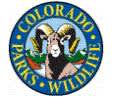Time Change Means More Wildlife Collisions
OutdoorHub 11.01.12

Nightfall comes early after the annual change from daylight savings time to standard time and that means the chances increase for motorists to hit a deer on the road.
“November is a dangerous month for motorists and wildlife,” said Colorado Parks and Wildlife Watchable Wildlife Coordinator John Koshak. “Commuters will be driving at dusk when visibility is poor and when wildlife is most active.”
Besides reduced visibility for drivers, deer are extremely vulnerable to getting hit because November is the peak of their mating season. “They are more mobile, easily distracted, and more likely to be chasing one another across roadways,” said Koshak.
Many animals, especially deer and elk, travel in groups. “If you see one animal on the road, generally there’s another one coming,” said Koshak.
If an animal is hit, wildlife officials advise drivers to immediately report the incident to the police and call 911 if there are any human injuries.
While some collisions may be unavoidable, motorists can reduce the likelihood of an accident by taking the following precautions:
- Slow down! Driving more slowly increases reaction time and reduces the chance of a collision.
- Stay alert while driving at dusk and dawn. This is when many of Colorado’s wildlife species are the most active and are likely to be crossing roadways.
- Scan ahead and watch for movement along roadsides. When driving at night, watch for shining eyes reflecting in headlights. Always look and be prepared for more than one animal.
- Obey traffic signs and watch for wildlife warning signs.
Colorado Parks and Wildlife requires that people who wish to salvage road kill apply for a permit within 48 hours.
Wildlife-related accidents can happen anywhere in Colorado including city streets; however, drivers should be especially cautious when traveling through forests and agricultural land, as well as the following “high-risk” areas:
- Colo. Highway 115, Colorado Springs to Penrose
- Colo. Highway 13, Rifle to Meeker
- Colo. Highway 82, Glenwood Springs to Aspen
- Colo. Highway 9, Silverthorne to Kremmling
- Colo. Highway 93, Golden to Boulder
- I-25, Colorado Springs to Monument
- I-25, Trinidad to New Mexico state line
- I-70, Floyd Hill, Mt. Vernon Canyon and Eagle
- I-76, Sterling to the Nebraska state line
- U. S. Highway 287, Fort Collins to the Wyoming state line
- U.S. Highway 160, Pagosa Springs to Cortez
- U.S. Highway 285, Antero Junction to Fairplay
- U.S. Highway 285, Morrison
- U.S. Highway 34, Loveland into the Big Thompson River canyon
- U.S. Highway 36, Boulder to Lyons
- U.S. Highway 50, Monarch Pass to Montrose
- U.S. Highway 550, north of Durango to Delta

